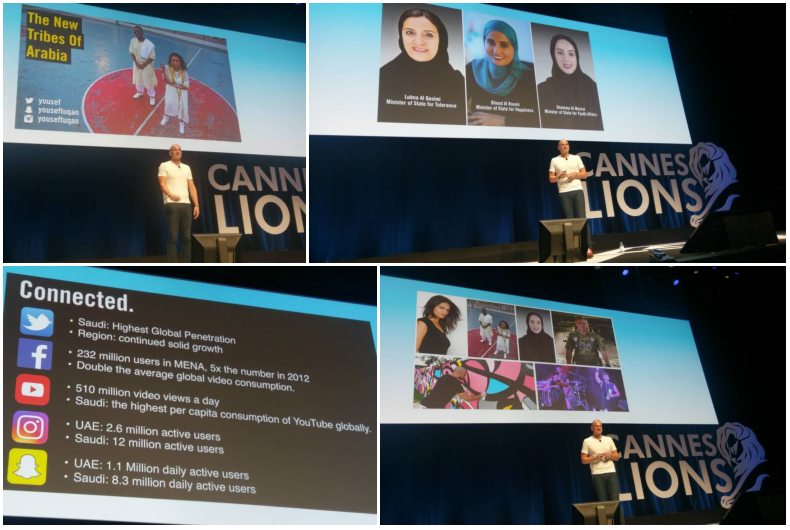 Over the years, Yousef Tuqan Tuqan has carved a niche for himself as the go-to person for several subjects on marketing and communication, including understanding the Middle East’s youth. On the first day of the Festival, the Group VP, Brand Marketing & Loyalty at Jumeirah Group presented his brand of regional insights at the ongoing Cannes Lions International Festival of Creativity 2017.
Over the years, Yousef Tuqan Tuqan has carved a niche for himself as the go-to person for several subjects on marketing and communication, including understanding the Middle East’s youth. On the first day of the Festival, the Group VP, Brand Marketing & Loyalty at Jumeirah Group presented his brand of regional insights at the ongoing Cannes Lions International Festival of Creativity 2017.
The address, part of the IAA UAE chapter’s initiatives at the Festival, was a significant moment for the Middle East and North Africa (MENA) delegation at Cannes, given that ‘Arabia’ took the Lions stage, which is a very uncommon occurrence at the Forum.
Mr Tuqan’s task on the day was to shed light on the new tribes of Arabia, a generation that he describes as people who did not belong anywhere and yet belonged everywhere.
The Backdrop
Setting the tone for his session, he explained the high digital connectivity in the Middle East, which is only growing. Saudi Arabia for instance, not only has the highest per capita consumption of YouTube globally, and around 510 million video views a day, but it also is the highest global penetration market for Twitter.
MENA is home to 232 million Facebook users, which is five times the number that was in 2012 and has double the average of global video consumption. Instagram has 2.6 million active users in the UAE and 1.2 million active users in Saudi.
One of the youngest platforms, Snapchat, is already at 1.1 million daily active users in the UAE and 8.3 million daily active users in Saudi.
On the flip side however, the regional also sees elevated numbers of global terror attacks (45 percent), world’s refugees (57 percent) and battle related deaths (68 percent), even though it represents only 5 percent of the world’s population.
The result is a high quality of brain drain from markets such as Egypt, Jordan, Lebanon and Palestine, that is in effect taking away some of the good quality talent in the region.
Mr Tuqan also cited a recent study on the Arab youth, indicating rising discontent, and the fact that allegiance to the nation and Arabic as the great unifier, are coming under threat.
“It is very hard to be a young Arab today but change is happening, and advertising is solving some genuine problems,” Mr Tuqan remarked.
The Fight Back
He pointed to the famous Majedalesa video titled ‘Hwages’, translating loosely to ‘concerns’, on how talent in Saudi Arabia was taking to public platforms to fight against the likes of the guardianship system – an issue that saw some relief in May 2017. Women in Saudi are directing some of these films breaking all conventions of that market.
Created by media production company 8ies, the video has been viewed nearly 13 million times on YouTube since it was uploaded in December.
Breaking up market wise contribution to MENA’s creative fabric, he reminded that Lebanon as a market has “no shortage of creativity and problems” — cases in point being the award winning campaign ‘The Good Note’ or the rise of bands such as Mashrou’ Leila.
Royal Jordanian is one indicator of some of the great work coming from Jordan.
The UAE perhaps has become the magnet that attracted the most amount of young talent. The role of women in these markets is changing too, and women are driving further change. The emerging set of audiences, in the fast evolving MENA backdrop, fit the descriptor of the young people who belonged nowhere and everywhere, creating their own tribes.




